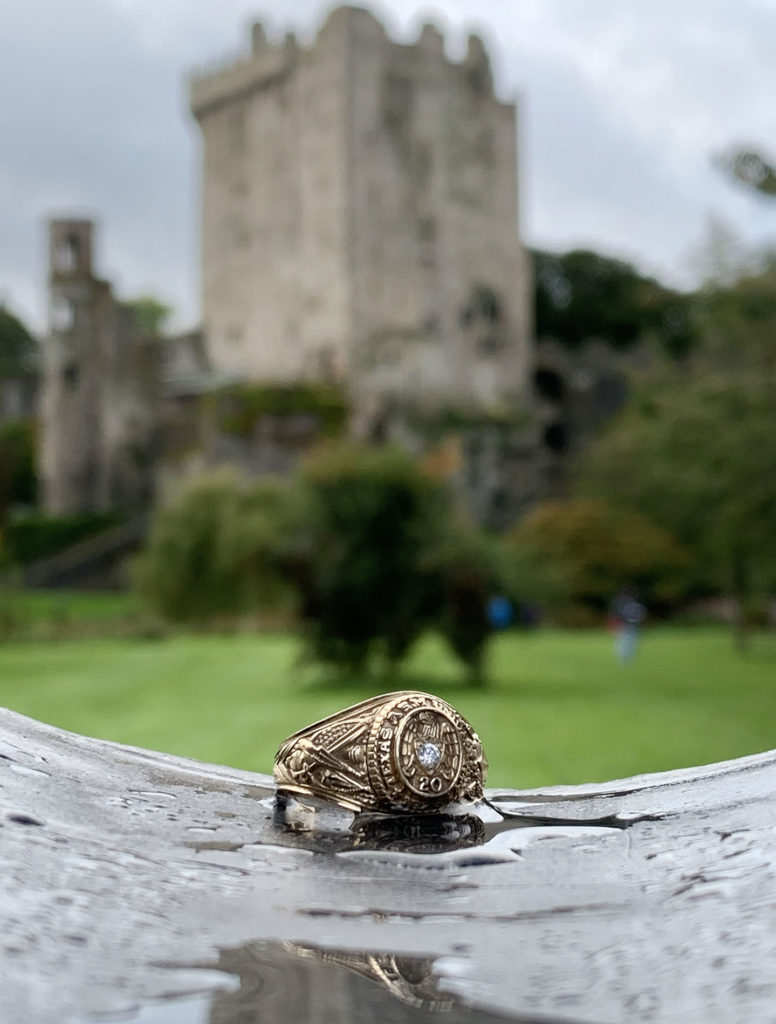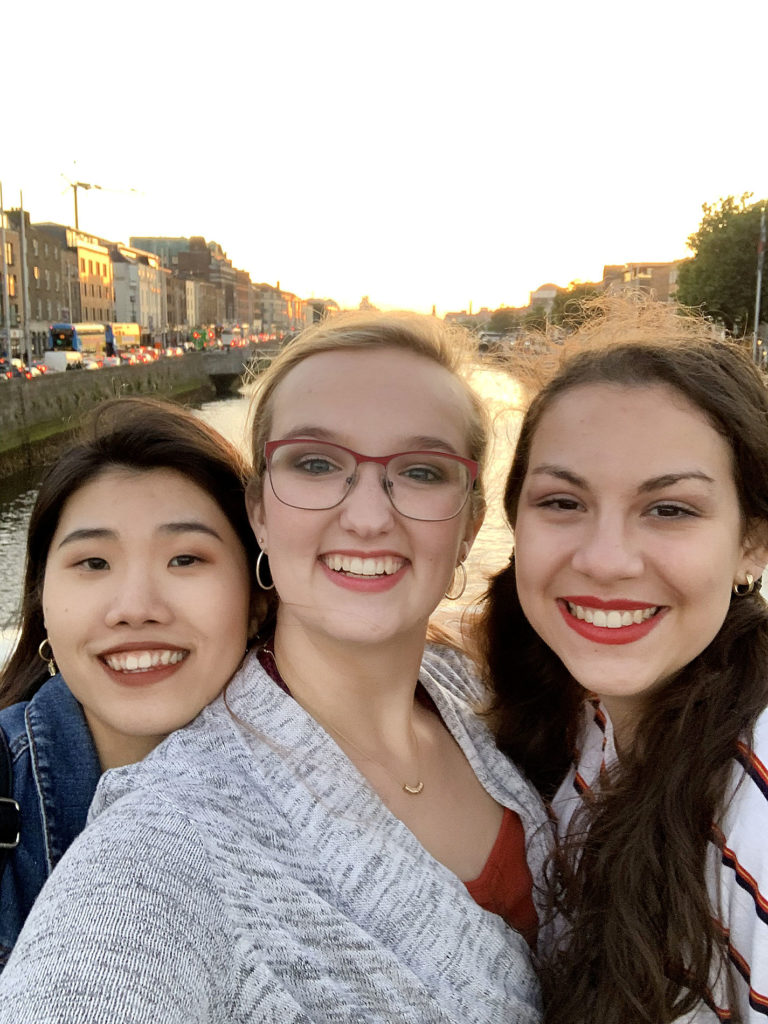Agricultural and life sciences education beyond the U.S. borders
Texas A&M AgriLife offers students international glimpse with study abroad
The sense of adventure and experience gained during study abroad in the Texas A&M College of Agriculture and Life Sciences tends to last much longer than the trip itself, whether the study abroad is two weeks, a semester or even a virtual exchange program.

Mackenzie Lewis ’20 had never left the country before studying abroad during college. Now, she is preparing for a career in international agricultural policy.
A graduate of the Department of Animal Science, Lewis is currently earning a master’s in agricultural science at ETH Zurich (LinkedIn), also known as the Swiss Federal Institute of Technology.
“I started with a two-week faculty-led study abroad in New Zealand and caught the travel bug,” she said. “I thought, this is amazing. Two weeks was too short.”
Discovering agriculture and international travel
Lewis grew up in Lubbock but was introduced to large animal agriculture at her grandparents’ hobby farm.
“They had a few cows, but all the cows were pets,” she said. “They all had Land Before Time dinosaur names.”
Eventually, she joined the FFA in high school and thrived. At the same time, she encountered international exchange students at her school.
“I thought, there are so many different things out there and so many things you can show people,” Lewis said. “I just didn’t know where I could apply that interest in agriculture. All I ever really knew was Texas and Texas agriculture.”
At Texas A&M, Lewis academically and socially pursued her interests, including agriculture and international studies. She majored in animal science with a certificate in equine science while participating in the Saddle and Sirloin Club and the Horsemen’s Association. Also, she helped international exchange students acclimate to Texas A&M via the International Student Mentor Association.
Through Texas A&M’s Agricultural and Natural Resources Policy Internship Program, ANRP, Lewis was exposed to the U.S. Department of Agriculture Foreign Agricultural Service and its work in international agricultural policy, which seemed like an exciting career path to her.
Bringing together interests through international programs

After participating in ANRP, Lewis set out to broaden her international experience. Lewis researched international programs in higher education and realized that a semester at University College Dublin would fit into her academic track.
“I had an interest in horses, and Ireland is famous for their horse industry,” Lewis said. “University College Dublin also had a bunch of the other animal agriculture channels. And I wanted to go to an English-speaking place my first time out.”
Once in Ireland, she quickly adjusted. The classes were on par with those at Texas A&M, though more self-directed. In addition, the program had a track record of integrating international students.
“It was super easy to make friends,” Lewis said. “I went in the first day and had three friends that I could talk to the entire time I was there.”
Furthermore, being in Dublin made it easy for her to learn about European agricultural policy programs. The education exposed Lewis to ETH Zurich, a highly respected institution in Europe. Lewis finished her bachelor’s at Texas A&M, then returned to Europe.
She is now one year into her master’s program.
Expanding the international student experience
Unfortunately, COVID-19 put a damper on Lewis’s first year in Zurich, as classes went online. But she managed to meet friends and find employment while continuing her international studies of agricultural science and agricultural economics. She is looking forward to the coming academic year, which starts Sept. 20 at ETH Zurich with in-person classes.
While in-person international programs at the College of Agriculture and Life Sciences International Programs have also resumed, virtual exchange programs are gaining prominence.
For example, the inaugural College of Agriculture and Life Sciences virtual program, ENGAGE: Leadership in a Virtual World, is a partnership with the School of Agriculture, Fertilization and Environmental Sciences at Mohammed VI Polytechnic University in Morocco. An international group of students work together to learn about global leadership and critical issues in agriculture.
“People may have a fear of going abroad, or current circumstances may prevent them from entering other countries,” said Kerri Vance, director of College of Agriculture and Life Sciences International Programs. “Virtual exchange eliminates all those barriers. It’s like a connected classroom. Students work in diverse international teams and get the experience of project management with students in different time zones. Students who do virtual exchange become more likely to study abroad.”
Advice for students considering an international program
Lewis stresses that students curious about education abroad programs within the College of Agriculture and Life Sciences or across Texas A&M University should do their research to ensure that a program is a good fit, funding is in place and visa issues are ironed out.
“Start the application process early,” Lewis said. “I found kinks in the process, and I helped work through them for other people. But start early because you never know what’s going to happen.”
First, meeting with a faculty member who is familiar with the program is crucial, Lewis said. It’s also important to speak with your academic advisor, who can plan a study abroad into your degree plan.
A good next step is talking to Vance, who is familiar with all international programs in the College of Agriculture and Life Sciences. Her expertise allows her to walk students through appropriate programs based on the initial criteria spelled out by their advisor.
As for funding, the Texas A&M University scholarship application has options for study abroad. Some academic scholarships come with a study abroad stipend, Vance said. Other external scholarships target specific demographics. In addition, Texas A&M workshops cover finding scholarships, using financial aid and choosing an affordable program.
“Texas A&M had scholarships that helped, and my department knew about scholarships or grants. There were no unexpected costs,” Lewis said. She added that University College Dublin had a bunch of different dorms “and I picked one of the cheaper ones. And it was great.”
Reasons to explore the intersection of agriculture and international programs
Vance said every department within the College of Agriculture and Life Sciences deals with global or international issues, from food scarcity to economics to COVID-19.
“Even if you run your own ranch in Texas, there will be national, state and possibly global policy about where you can export your crops,” Vance said.
International Programs even helps students find options for international work-study after graduation.
“Agriculture and life sciences are international by nature, global by nature,” Vance said. “That kind of perspective is one of the most valuable things a student can have.”
More information about College of Agriculture and Life Sciences International Programs is at tx.ag/internationalprograms.


